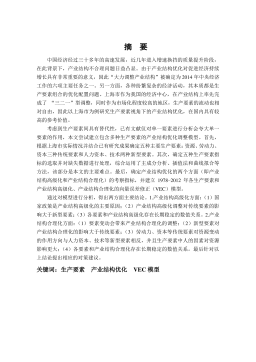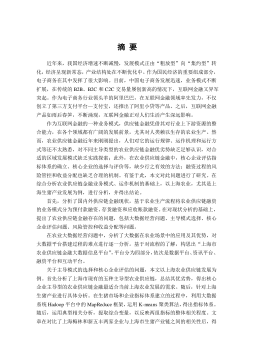S型截面钢丝辊模拉拔技术研究
S型截面钢丝辊模拉拔技术研究摘要S型截面钢丝是一种异型截面钢丝,在建筑、机械和运输行业有广泛地应用。目前,异型截面钢丝的生产工艺基本上都是采用以经验为主的试验法制定,产品质量难以保证。有限元数值模拟技术可以获得具体全面的金属变形过程,已经成为塑性研究中的有力工具。论文对S型截面不锈钢钢丝的成形过程进行研究。根据不锈钢材料强度高、硬化严重和S型横截面形状复杂、尺寸小的特点,确定采用两道次辊弯预成形、两道次辊模拉拔、一道次固模精拉的工艺方案。设计了S型截面不锈钢钢丝五个道次成形工艺过程的轧辊孔型。在CATIA中建立了轧辊孔型的三维实体模型,利用DEFORM3D三维有限元软件对S型截面不锈钢钢丝的成...
相关推荐
-
我国基层财政困难的制度成因分析与对策研究VIP免费

 2024-09-20 46
2024-09-20 46 -
我国煤电产业链纵向交易合约机制研究VIP免费

 2024-09-20 43
2024-09-20 43 -
生产要素视角下的上海市产业结构优化研究VIP免费

 2025-01-09 8
2025-01-09 8 -
我国银行业结构与经济结构关系研究VIP免费

 2025-01-09 17
2025-01-09 17 -
大数据视角下农业供应链金融研究VIP免费

 2025-01-09 14
2025-01-09 14 -
跨国大型综合超市的规划研究VIP免费

 2025-01-09 9
2025-01-09 9 -
跨境电商农产品质量安全问题研究VIP免费

 2025-01-09 9
2025-01-09 9 -
世界市场的虚拟化与我国国际电子商务发展方向研究VIP免费

 2025-01-09 43
2025-01-09 43 -
中国政府对电力行业的价格规制问题研究VIP免费

 2025-01-09 18
2025-01-09 18 -
中小企业信息化系统集成技术研究VIP免费

 2025-01-09 30
2025-01-09 30
相关内容
-

跨国大型综合超市的规划研究
分类:高等教育资料
时间:2025-01-09
标签:无
格式:PDF
价格:15 积分
-

跨境电商农产品质量安全问题研究
分类:高等教育资料
时间:2025-01-09
标签:无
格式:PDF
价格:15 积分
-

世界市场的虚拟化与我国国际电子商务发展方向研究
分类:高等教育资料
时间:2025-01-09
标签:无
格式:PDF
价格:15 积分
-

中国政府对电力行业的价格规制问题研究
分类:高等教育资料
时间:2025-01-09
标签:无
格式:PDF
价格:15 积分
-

中小企业信息化系统集成技术研究
分类:高等教育资料
时间:2025-01-09
标签:无
格式:PDF
价格:15 积分





